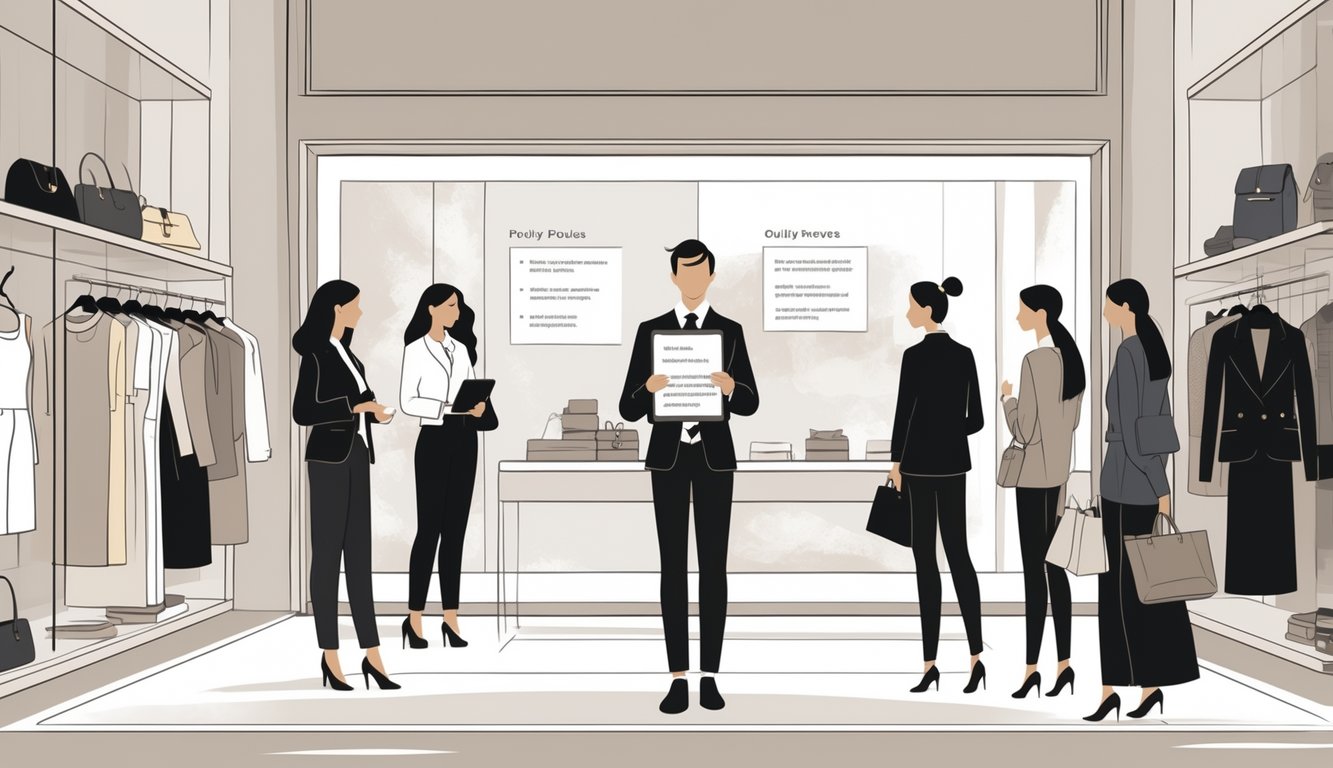
Balancing Fraud Prevention and Customer Experience
They keep changing the rules, and nobody notices until you try to return boots that didn’t fit. I hear the same thing from everyone—retailers get stricter to fight fraud, but regular shoppers just get stuck in the crossfire.
Maintaining Trust While Enforcing Rules
Nobody wants scammers returning trashed jeans for a refund (I’ve seen people try). But then you get a dress that’s two sizes off, and suddenly you’re fighting with customer service.
Store managers admit they track serial returners—digital breadcrumbs and all. ASOS and Zara quietly deactivate suspicious accounts. But even the best AI flags the wrong people sometimes.
A 2024 survey said 17% of fraud blocks are false positives. Seventeen out of a hundred honest shoppers! McKinsey backs it up. I get emails about “policy clarification” every week, but nobody actually fixes anything. The real risk? Losing loyal customers because the system doesn’t know who’s who.
Educating Shoppers on New Guidelines
Trying to figure out new return rules feels like reading a contract in a language you don’t speak—except the rules change every month. When I consult with brands, I beg them: just be blunt. Use pop-ups, slap the rules on the return label, whatever. “Return unworn in 14 days. Tags attached. Excessive returns get flagged.” No legalese.
Complaint rates drop when stores actually explain things up front. FashionUnited says most backlash comes from bad communication, not strict rules. But at checkout? Still crickets. Some brands still use vague emails instead of clear pop-ups. If shoppers feel ambushed, they leave. If they know what’s coming, they barely care.
Comparing Fashion Return Policies by Brand
Online returns aren’t just a profit thing—they’re a headache for everyone. Ridiculous return rates, shipping costs, annoyed shoppers waiting for refunds. I almost threw out a Pottery Barn pillow just to avoid their hold music.
Social Media and Brand Reputation Impacts
So, Shein sneaks in a sneaky little fee on that $7 neon top—did I even notice? Temu dithers, “free” returns suddenly not so free, and the internet loses it. Hashtags everywhere, TikTokers ranting, someone on Threads splitting hairs over “exchange allowed” versus “refund denied.” I swear, 72% of shoppers (or whatever the latest stat is) say they catch this stuff—loyalty just evaporates if TikTok mobs start piling on, but brands act like they don’t even see it happening (Vogue Business literally spells this out).
But TikTok isn’t exactly a help desk, is it? The gripes just hang around, even when brands quietly reverse course. Zara and H&M hit you with shipping fees if you want to return, but their Instagram ads still chirp “hassle-free” like nothing changed. I mean, do they think we’re not screenshotting the “refund denied” pop-up and blasting it everywhere? I almost miss those days when you could just return anything, no drama, before every little policy tweak went viral.
Transparency in Policy Communication
Nothing like squinting at a “refund policy” link during checkout—Pottery Barn, for example, loves their “exceptions apply” footnotes, and Shein or Temu tuck crucial deadlines under those expandable menus. Is it bad UX or just hoping I’ll give up?
Apparently, 68% of U.S. and U.K. shoppers (yeah, I’m quoting surveys now) think return abuse is a breeze when rules are loose. But the second policies get stricter—restocking fees, shorter windows—nobody knows what’s going on anymore (USA Today tries to explain why brands even bother). I once got hit with a “restocking fee” returning a Pottery Barn lamp. Why even bother with policies if they’re unreadable? The more confusing, the more people mess up, and weirdly, brands kind of act like that’s the point. Just slap a giant “return by this date” sticker on everything—oh wait, that wouldn’t go viral.
Industry Reactions and Future Outlook
Brands aren’t quietly updating PDFs in a back office—they’re yanking perks mid-scroll, and half the time I only find out after my return gets rejected. Analytics dashboards probably scream every time return rates spike, especially in fashion. Returns keep making logistics more expensive, and every finance exec I know is obsessed with the cost of “free” returns.
Predicted Shifts in Return Practices
No slow fade here—retailers just slam the door. L.L. Bean’s “lifetime” policy? Gone, thanks to people gaming the system (it’s all in this case study). In the UK, apparel returns topped GBP7 billion in 2022, and who even knows the real number.
Gen Z and Gen Alpha still want everything easy, but brands are quietly sneaking in shipping fees, restocking charges, and shorter windows, hoping fatigue beats loyalty. Some Fashion Institute of Technology expert warns about “customer wrath” if brands don’t at least explain, but most just risk it. Who reads fine print unless you’re bored or running a spreadsheet? QR codes, e-receipts, payment method hoops—sometimes I think they’re designed to make returns so annoying you just give up.
Innovations in Return Logistics
Reverse logistics—supply chain folks are obsessed. Used to be, a bored warehouse worker tossed your return in a bin. Now? PwC says 30-40% of online fashion orders get sent back, which is chaos—costs, bottlenecks, shrinkage, and accountants sweating (seriously, it’s common). I know an ops manager whose AI flagged a “serial returner” who cost them five figures in a single quarter.
And yet, there’s always some shiny new “smart” drop-off: lockers, third-party pickups, live tracking. I tried the app-van thing once—the driver got lost twice. “Innovation,” sure. Still better than hauling stuff to the post office, but every update just adds more weird backend rules. Does anyone at the top even try to return stuff themselves? I doubt it.



